Lara Croft Go Gets Game Design
I recently finished playing through Lara Croft GO on my iPhone. I really enjoyed playing this game from start to finish, so I decided to write about the parts of the game that I think made it such a fun and enjoyable experience.

Lara Croft GO is a turn-based puzzle game released in August 2015 by Square Enix Montreal, the company that developed other great mobile games such as Hitman GO and Hitman Sniper.
Visual aesthetics of Lara Croft GO is gorgeous. Everything in the game is rendered with an aesthetically pleasing low polygons, retro art style1, which is apparently inspired by the first instalment of the Tomb Raider series. The vivid colour tone brings the game to life and provides a nice visual cue on the interactive elements in the game. Lara’s animations are fluid and lively, of which the game reminds you about with great slow motion scenes once in a while.
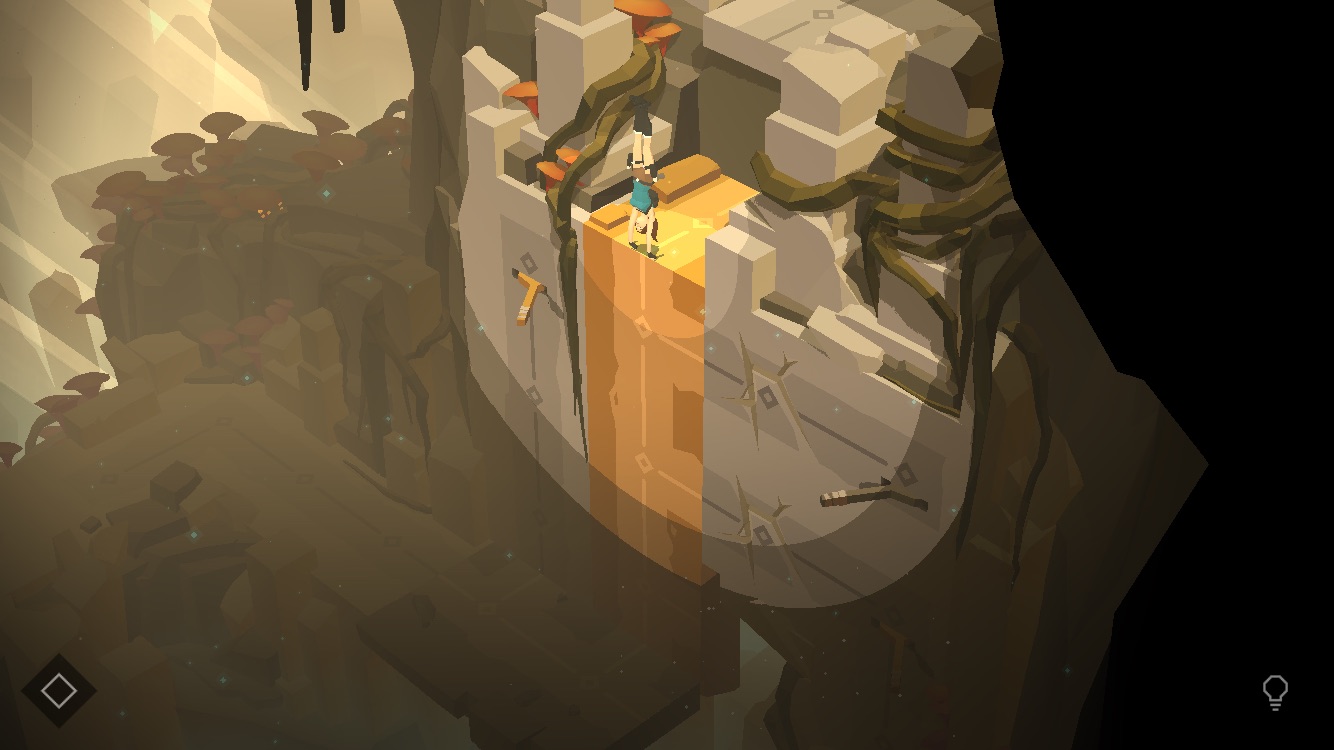
How Lara Croft GO Plays
In every level, Lara needs to move from where she stands at the beginning to the exit, one step at a time. On the floor tiles of each level, there are markings indicating connected tiles as valid next steps for Lara. As Lara makes a move, all the moving parts in the level, such as enemies, platforms or traps, get one action as well. The challenge or the puzzle aspect of the game comes from navigating Lara through these hostilities so she gets out alive.
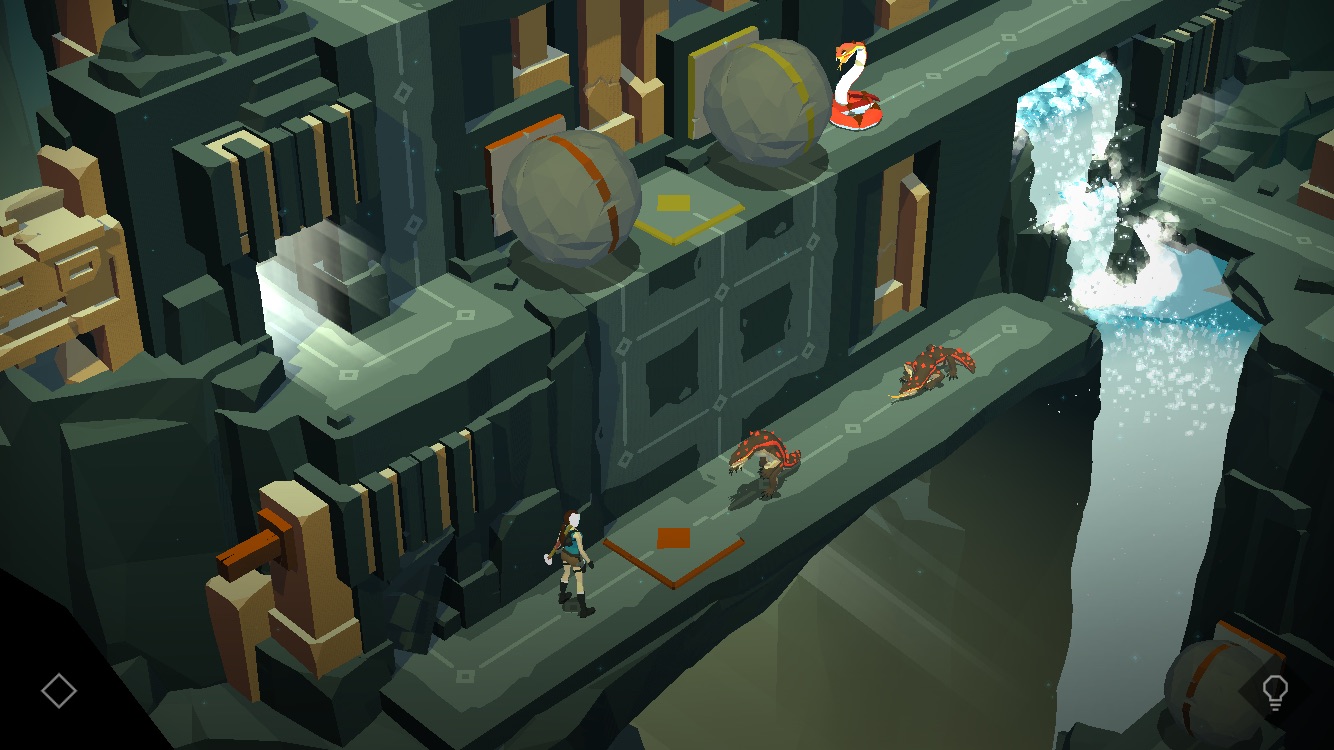
Playing Without Frustration
Solving puzzles in Lara Croft GO is a fun and rewarding experience. Every level is broken down into multiple sections with obvious starts and ends, and every section stands as an independent puzzle on its own. I love how the game has a nice touch of making rocks crumbling down to block off the entrance from where Lara entered to indicate the start of a new section, it fits in very well with the theme of the game. Restricting access to previous section helps to clarify the scope of current puzzle and prevent confusion about the necessity for backtracking to solve current puzzle.
Lara Croft GO’s design decision to split each level into small, independent sections takes the frustrations and repetitive aspect of conventional puzzle games away while leaving the fun intact. I never have to worry about the bad consequences or the need to replay earlier sections when I messed up. The game simply lets me resume playing from the beginning of current section. I felt encouraged to experiment with any ideas that I have to solve the puzzles and if I failed, Lara is back and ready to try again within seconds. The interruptions to my puzzle-solving flow are brief and minimal.
In addition, having smaller and independent sections meant that mobile gamers can easily pick up and play through a level in multiple settings. I really appreciate this aspect of the level design, as I mostly played this game during various pockets of idle time throughout my day.
Integrated Tutorials Within the Levels
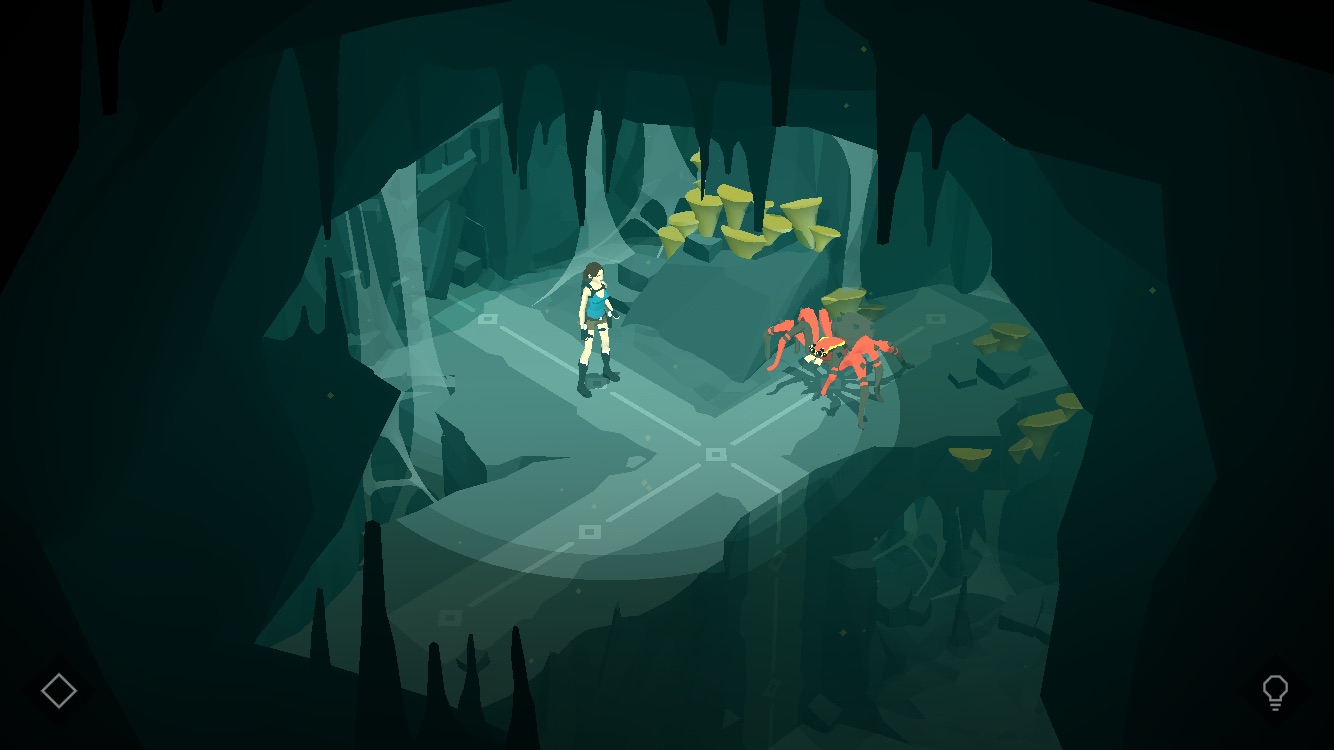
The experimental nature of every level encourages a trial-and-error style of gameplay, which is well-suited for learning about new enemy types and gameplay mechanics. Lara Croft GO has no long winded text instructions, and no heavy-handed in-game tutorial2. Instead, the levels themselves are designed to teach you about the new mechanics or enemies when you first encountered them. Players are free to experiment in the levels and master these new knowledge so they can defeat the new enemies or navigate Lara to next level in one piece3. This tutorial design felt like a breath of fresh air. I felt encouraged and fun to explore and learn about what is new, and I can progress at my own pace.
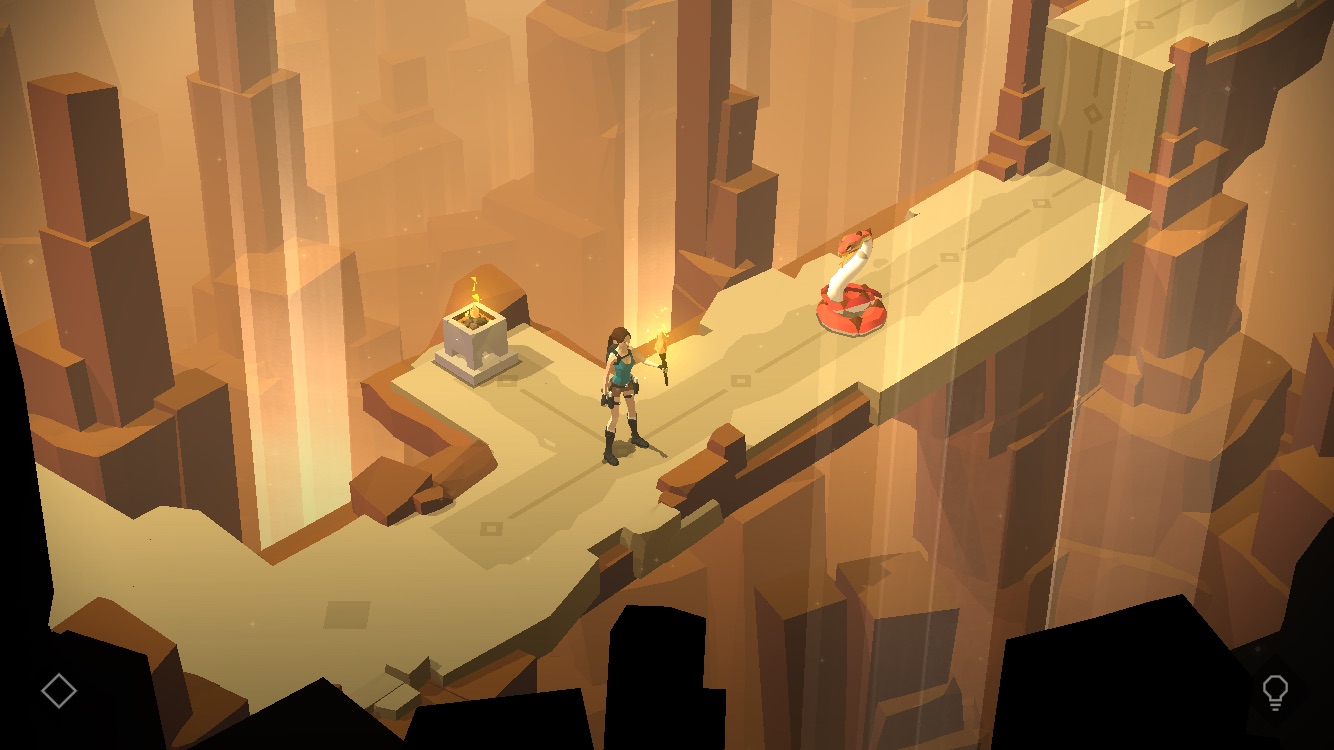
Lara Croft GO introduces one or two new elements in each chapter4. One particular element, fire or Lara acquiring a fire torch, significantly changes all enemies behaviour and enemies’ fear of fire becomes a new tool for solving the puzzles. I feel the additions fitted well with the theme (e.g., human-hunting lizards and giant rolling boulders) and kept the game fresh as I played through the levels. I appreciate how all the enemies and mechanics have recurring roles throughout the game and it made all the elements felt meaningful. Overall, I think a smaller number, but carefully considered additions work much better than bombarding player with new elements every level, which are never to be seen again after a few levels.
Epic Boss Fight
The following discussion contain spoilers, feel free to come back and read this after completing the game if you haven’t play through it yet.
How often do you get awesome boss fight in a puzzle game? I think Lara Croft GO has an amazing boss design, the Queen of Venom. She is teased in the cut scenes between levels in the earlier chapters, and even causing Lara to have a few close escapes then.
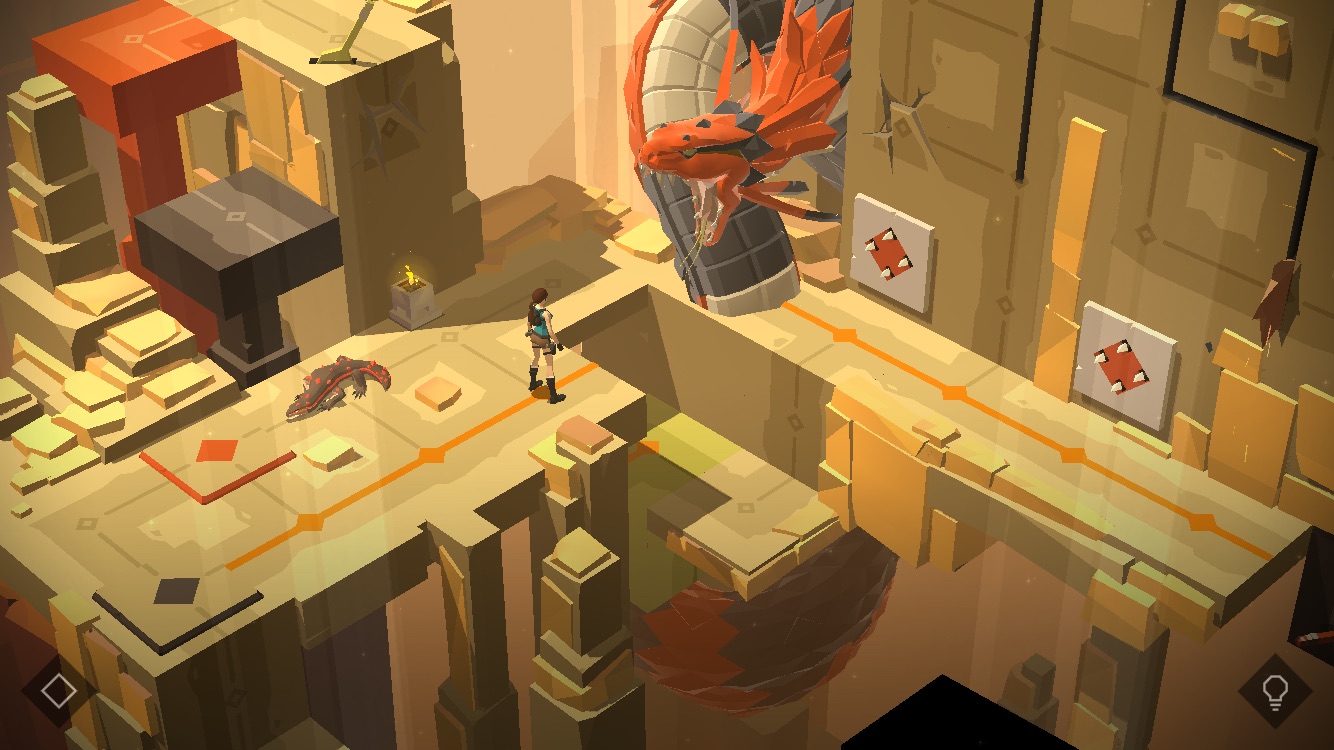
Finally, in Chapter 4: The Maze of Spirits, we get to confront the Queen herself when her Highness becomes an active hostile element of the puzzles in chapter four. I think this boss design is excellent because the Queen becomes a new and powerful enemy with a unique attack mechanic. Lara has no means to confront and defeat the Queen until the very end of the boss fight.
Having such an overpowered enemy brings a new dynamic to the puzzle solving aspect of the game. I need to figure out how to turn the usual hostilities on the level against the Queen. This new dynamic provides a fresh perspective to the game, while creating an intense experience for the epic boss fight.
Without spoiling the details too much, it felt so emotionally satisfying when Lara picked up and threw the spear right in the face of the Queen at the very end of the fight5. Thumbs up for emotional satisfaction.
Immersive Controls
From an interaction designer perspective, Lara Croft GO’s control scheme works really well on touch-enabled devices. Lara is primarily controlled with swipe gestures, and occasionally the floor has tappable, flashing arrows to indicate places that Lara can move the stone pillars to. This means there are almost no on-screen controls while I am trying to solve puzzles to help Lara with her adventure, and thus the game felt immersive and intuitive to control.
Tying back to the encouraging experience that I was discussing earlier, Lara Croft GO’s game control has a nice touch that I really appreciated while I was doing a lot of trials and errors to solve the puzzles. If you have spent some time with the game, I bet you would have discovered this as well. If I issue a few commands in quick succession (e.g., swipe up, swipe up, swipe left), Lara’s motions will speed up until she has completed all those commands. It sounds like a minor detail, but this is super effective in reducing my frustrations while I was working through a level and it encourages me to keep playing instead of rage quitting.
Gotta Find Em’ All
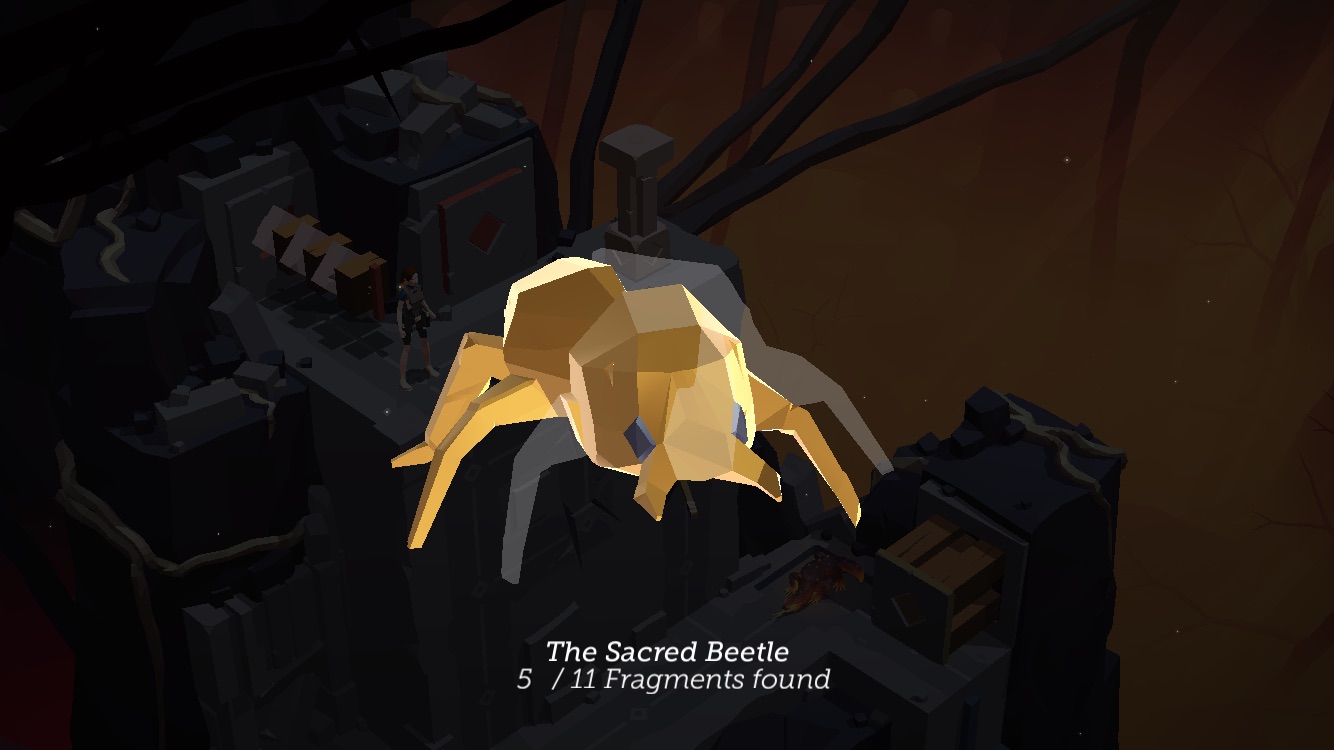
Lara Croft GO offers a mini-game or side quest for players to find hidden treasures such as a gem fragment or a broken piece of an exotic relic. Recovering a complete relic or finding all the gem fragments will provide a custom outfit for Lara Croft as reward. The outfits have no impact on the gameplay but they gave Lara refreshing makeovers as I played through the chapters. I enjoyed looking out for these hidden treasures whenever I entered a new level and hunting for these treasures provided relaxing breaks between solving puzzles.
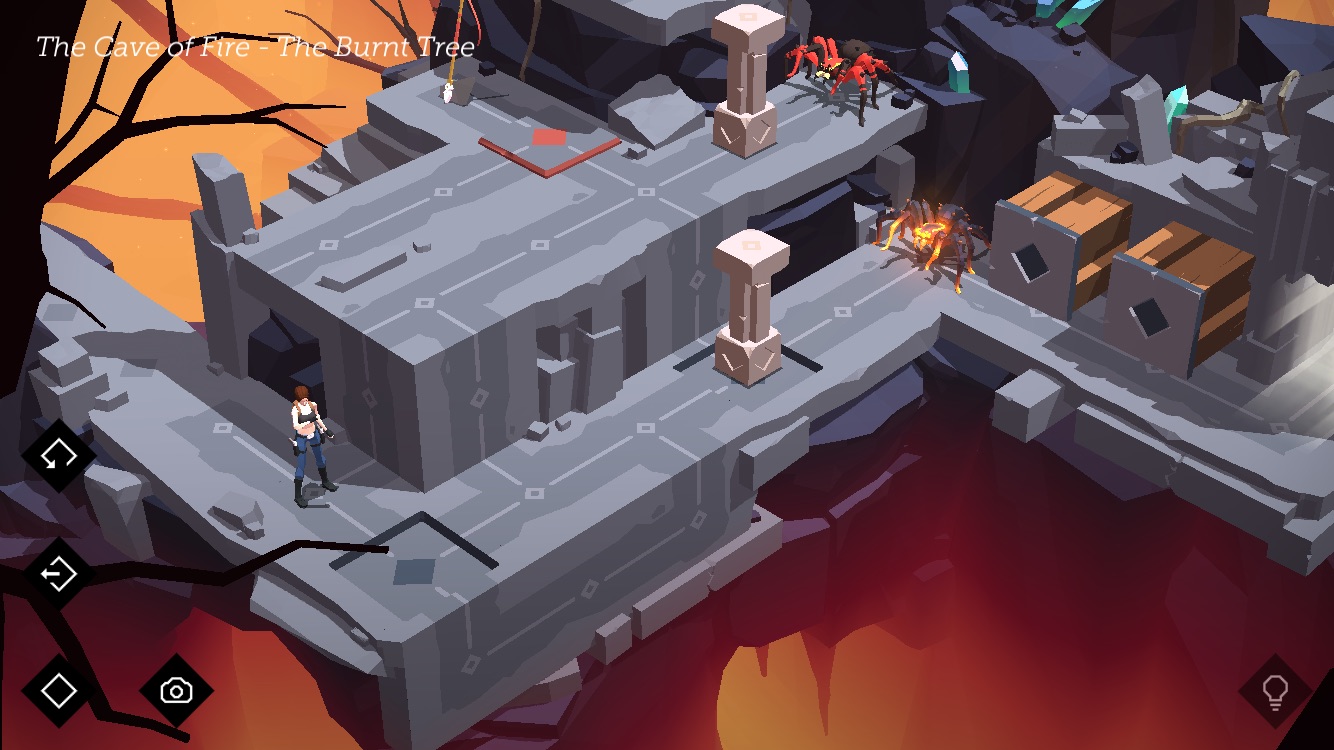
However, the game does not show us the number of treasures we have collected for the current level that we are currently playing. I understand having extra information can detracts from the immersive experience, but how about showing them when the menu is invoked and the game is paused? Instead, I ended up having to quit the level to the level selection screen to check on the number of treasures that remained uncollected in the level. I can think of various reasons why the designer decided not to show treasure-related info while a player is playing through a level (e.g., distracts player from the puzzle-solving, encourages replay to collect all treasures), but I still think it is a weird decision especially since the information is displayed as soon as I quit to the level selection screen.
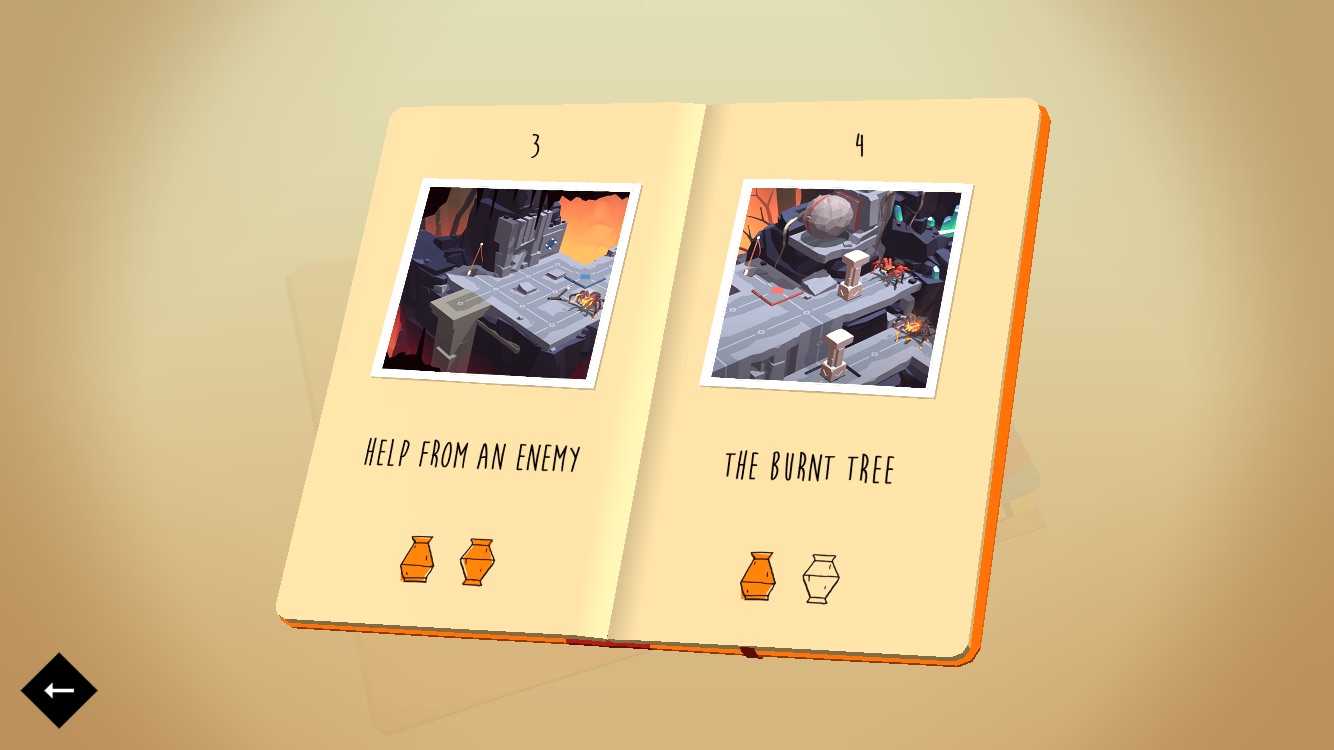
In summary, Lara Croft GO is a great mobile puzzle game.
It is exciting seeing an established game producer like Square Enix to come up with a new genre innovative design for a popular franchise such as Tomb Raider. If you have gotten this far and you still haven’t owned or played the game yet, give Lara Croft a GO (pun and apologies intended). I hope you will enjoy Lara’s adventure as much as I did!
-
Reminds me of the art style from The Legend of Zelda: The Wind Waker ↩
-
“Hey, try picking up the spear. Cool, now try throwing it at the snake. Nope, can’t do anything else until you throw that spear.” ↩
-
Like the art style, this also reminds me of how new mechanics are conveyed in games from The Legend of Zelda series. ↩
-
Except during the Escape chapter, but there’s no time for that when the whole place is crumbling down! ↩
-
A part of me did wonder “Huh? Doesn’t this spear seemed a little too convenient?”, but then I was fighting a gigantic hostile snake that had stalked me for the entire game, so it seemed fair. ↩